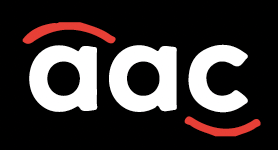Few people will be unaware of the serious flooding events which have occurred in Great Britain during the last couple of decades, and which seem to have become an annual feature in news bulletins and causing misery for the people directly affected by them.
Part of the Government’s response to these flooding disasters was the creation of the Flood and Water Management Act 2010’ which was devised following a number of high-profile and serious flooding events, including the devastating flooding of Cockermouth in 2009. The Act aims to manage and reduce flood risk and coastal erosion associated with extreme weather, compounded by climate change.
A major consideration for the Act is the fact that so many new building developments, whether housing, commercial or industrial, create hard surfaces – roofs, driveways, car parks, hard standings – from which surface water has been diverted into sewerage systems instead of continuing to infiltrate into the ground as it would have done previously.
With storm-water drains usually running at full capacity, especially during severe rainstorms, additional loading from further new building developments contributes to flooding, either locally or further downstream of the sewerage system.
Amongst a number of requirements the Flood & Water Management Act, in turn, placed a duty on developers to incorporate sustainable drainage of surface water in developments that require drainage. Local Planning Departments now have the authority to vet and approve new developments with respect to their drainage schemes and to ensure that rainwater from the site will not adversely affect the surrounding environment.
The criteria for requiring Planning Permission for a development’s drainage scheme vary in the different nations of the UK, and further, slightly, within different local authorities. In Wales, for example, any development of more than one dwelling house, or with an area of more than 100m2, requires the approval of the scheme, and SuDS (Sustainable Drainage Schemes) on these developments must be designed and built in accordance with the new statutory SuDS standards published by Welsh Ministers. In England, the requirement is currently less strict in terms of the scale of the development, but SuDS principles still apply.
The principle of sustainable drainage is that any new development requiring surface water drainage should not allow any more water into the local storm-water drains than was occurring prior to the construction. The Government website describes sustainable drainage thus; Sustainable drainage systems slow the rate of surface water run-off and improve infiltration, by mimicking natural drainage in both rural and urban areas. This reduces the risk of “flash-flooding” which occurs when rainwater rapidly flows into the public sewerage and drainage systems.
Preferably, this would mean managing the rainwater within the site boundaries by use of soakaways – allowing the water to run to the ground as it would normally have done. This is not always possible, however. Sometimes the ground is of a clay type, where water cannot percolate, or there may be limitations on the placing of soakaways due to the proximity of other buildings.
In such cases, water attenuation is often the answer. Water attenuation systems prevent surface water flooding by slowing down the rate of water entering the drainage network.
Most systems comprise some sort of holding area, often an underground tank, that fills up during a storm. The tank incorporates a method of releasing stormwater at a flow rate that the storm-water drains can handle without surcharging (such as an orifice plate, or a vortex flow control).
A common method of constructing below-ground tanks for water attenuation, which are capable of providing support to the overlying ground, surfacing and vehicles, is to form the tank – or holding area – from plastic crates stacked alongside and on top of each other to create the required void volume (think – large milk crates). The void volume will have been calculated by a hydraulic engineer in a calculation based on a prescribed rainfall intensity figure, a storm return factor, a required flow rate from the tank, and an additional factor for the expected effect of climate change.
However, while the plastic crates provide the void volume, they are a means to create a hollow structure that can be overlaid by groundworks. They are not water-tight on their own, hence the need for a waterproof membrane to surround them and create the finished, water-holding structure.
That’s where AAC Waterproofing, and Prelasti, come in. Prelasti is an EPDM (synthetic rubber) membrane that we prefabricate into sheets of any required size and shape for a variety of purposes. Roofing, lake and pond linings, civil engineering and attenuation tank surrounds are all applications for which we fabricate Prelasti EPDM sheeting.
Apart from its natural waterproofing properties, the principal benefit of Prelasti is that the membranes are fabricated into large, custom-designed sheets, under factory quality controlled conditions in our workshop (all under our ISO 9001 & 14001 accreditations). Individual rolls of the EPDM membrane are welded together on a hot-vulcanising machine, ensuring that all jointing is totally watertight and creating sheets up to 1,000m2 without the need for more risky site jointing, effectiveness of which is dependent on the vagaries of site conditions and the weather.
Prelasti sheet ‘tank-wrapping’ is formed in two dimensions, but is dressed around a three-dimensional tank by the inclusion of excess material for the sides and top. At the corner sides of the tank, the sheet can simply be folded and pleated to avoid the need for any site jointing, which not only produces a more securely watertight wrapping but reduces installation time on site. Site jointing techniques are also readily available for more complex situations and for sealing penetrations such as inlets and outlets.
The Prelasti membrane is installed between layers of geotextile fleece as protection layers.
At AAC Waterproofing we have been supplying and installing Prelasti EPDM prefabricated sheeting for all sorts of building and construction waterproofing situations since the early 1990s and will be happy to make our knowledge and experience available for any projects where a waterproofing membrane is required.
